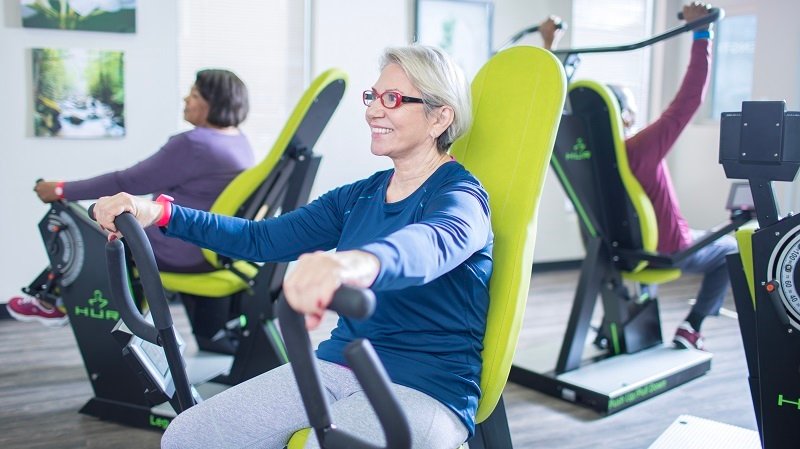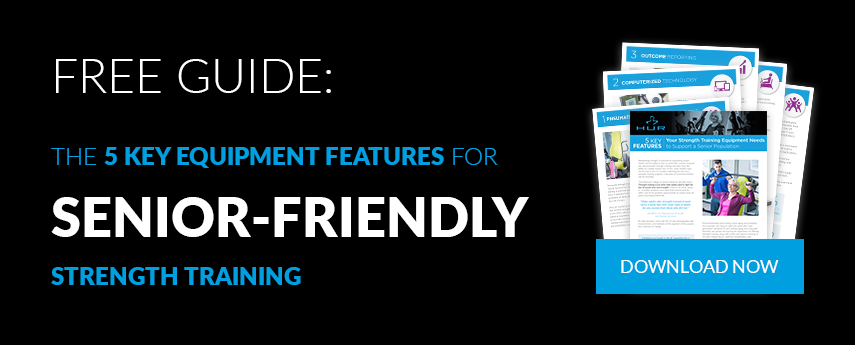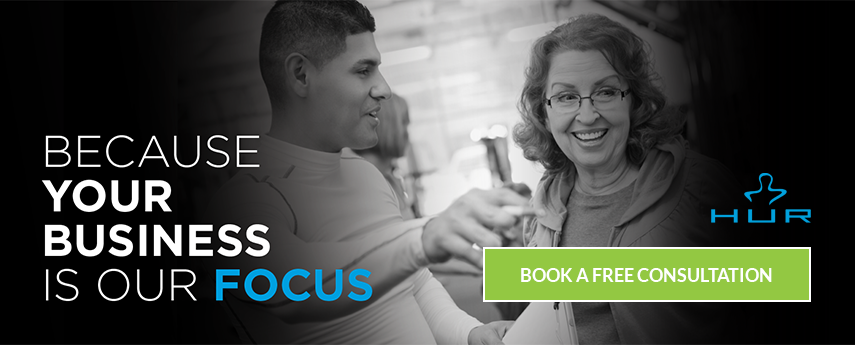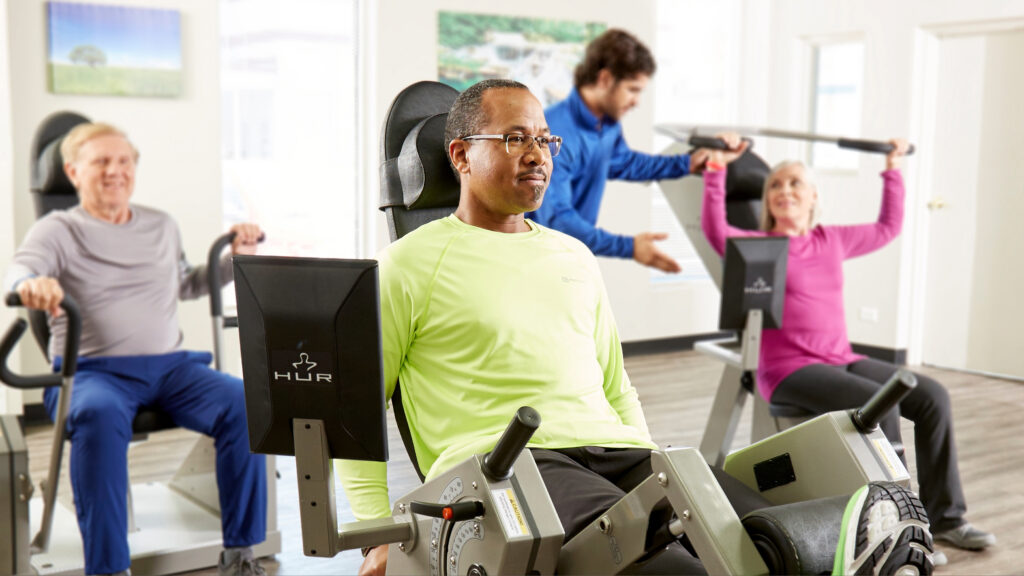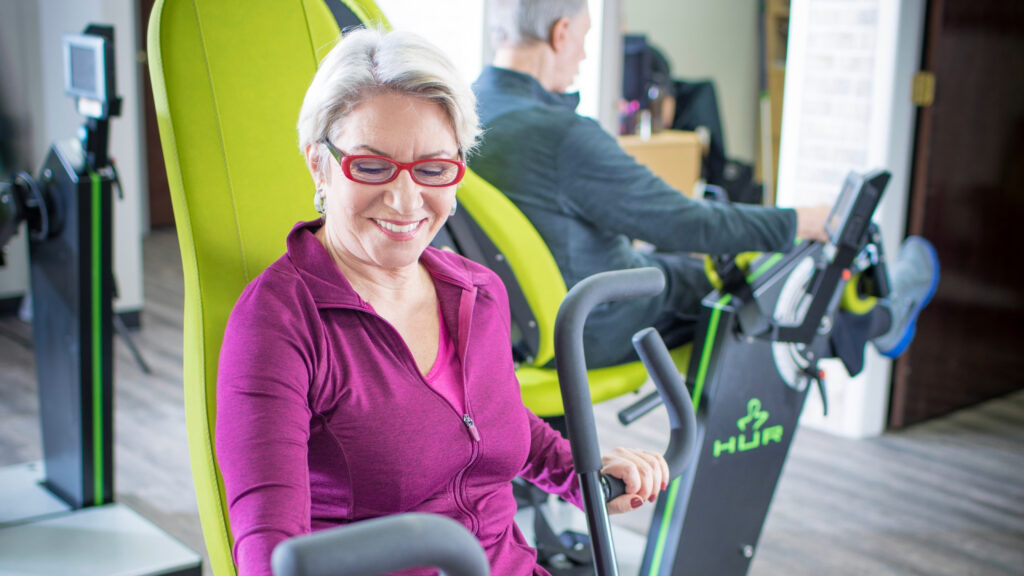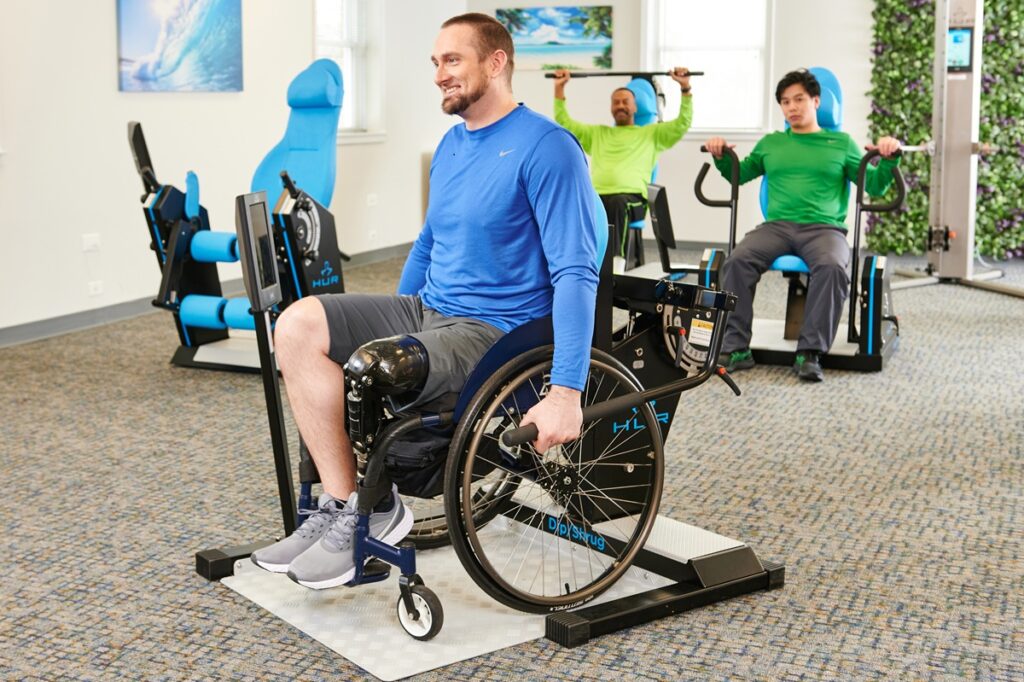In many ways, the message the world sends to older adults who are retired is, “Relax. Take it easy. You’ve earned it”. In a way, this is ironic – we finally have enough time to do all the things we didn’t have time for in our younger years, and everyone is telling us to put our feet up.
But, many seniors don’t want to put their feet up. Many seniors want to get out there and do things. They don’t want to sit back and passively age. They want to age actively.
“Get out there!” is really the message we should be sending to seniors because the older we get the more important it is to stay active. For seniors who want to enjoy their golden years, regular exercise, both cardio and strength training, isn’t optional.
For seniors with limited endurance because of injury, disease, or simply because they haven’t exercised regularly in the past, low impact, low resistance exercises is the best place to start. But for those seniors who have been active, and are healthy and in good shape, a more challenging routine will help maintain muscle mass and cardio strength.
Here’s a list of the 5 best exercises to challenge active seniors:
For each of these exercises, maintaining control of the movement is one of the most important aspects of strength training in older adults. Slow movement and coordinating breathing is essential.
#1: Build strength in the muscles of the legs, hips, and glutes.
Non-equipment exercise: The Squat
Squats are one of the best ways to work the muscles of the thighs, hips, buttocks, and hamstrings, but they require good form to not cause injury. Using a sturdy chair is a great way to encourage proper technique and have something close by to lean on for support if necessary.
Stand tall, feet hip-width apart, in front of a sturdy chair. Cross arms over chest, or extend straight out in front of you for balance. As much as possible, shift your weight to your heels and slowly lower yourself just to the point that your backside is barely touching the seat. Do not sit down. As soon as your rear touches the seat, return to standing, pushing through the heels through the whole movement.
To make it more challenging, hold a medicine ball or hand weights while squatting.
Equipment exercise: The HUR Leg Press will also work the muscles of the thighs, hips, buttocks, and hamstrings. Zero starting load and .25-pound resistance increases allow the user to build on their progress over time.
#2: Build strength in the muscles of the chest, triceps, shoulder, and back.
Non-equipment exercise: Incline Push-up
Push-ups work the muscles of the chest, triceps, shoulder, and back. However, when you perform a push-up off an incline, there is more emphasis on the lower chest and back muscles.
The intensity of incline push-ups depends on the height of the incline. If you are just starting to build upper body strength, begin by using a high incline, such as a countertop, allowing you to perform the move with low intensity. As you build strength, lower the incline all the way down to something akin to a porch step, which will increase the difficulty of the move.
To do an incline push-up, stand facing a countertop, bench, or sturdy chair. Make sure that whatever you’re using won’t move as you use it. Put both hands on its edge, slightly wider than shoulder-width apart. Extend both feet behind you so that your body forms a straight line from the top of your head down through your heels. Bend your elbows so that they flare out slightly from your sides, and lower your shoulders to your hands. Be careful to keep your back straight and core braced. Pause for a second or two, then press through your palms to return to the starting position.
To make it more challenging as you get stronger, reduce the incline until you are performing pushups on something that’s only about 12-inches above the floor.
Equipment exercise: The HUR Chest Press safely and effectively strengthens the chest muscles while increasing tone in arms and shoulders.
Fitted with range limiters and both horizontal and vertical grips, the press guides arm movement along a fixed path, helping to promote proper technique that is safe even for those with shoulder injuries.
Exercise #3: Build muscles in the upper back
Non-equipment exercise: Resistance Band Row
This simple exercise strengthens the upper back muscles located around and between the shoulder blades. Training these muscles is important to support good posture and balance. The upper back has muscles that often get neglected during strength training, partially because there aren’t a lot of exercises effective at targeting them. Thankfully, the resistance band row does an excellent job isolating these muscles and building strength.
Tie a resistance band at elbow height around something sturdy that will not move, like a banister, at elbow height. You can also sit flat on the floor with your feet straight out in front of you and wrap the band around the arch of your feet.
Grab both ends of the band, one in each hand, and position your hands with palms facing each other. With your chest up, pull the band straight back until your hands reach the sides of your ribs. As you pull back on the band, squeeze your shoulder blades together.
Equipment Exercise: The HUR Lat pull machine also effectively targets the muscles in the upper back as well as the shoulders. Independently moving arms allow you the option of focusing on one muscle group at a time, adjusting the resistance on each side.
Exercise #4: Build muscles in the entire lower body
Non-equipment exercise: The Lunge
Lunges work the muscles of the glutes, hips, hamstrings, quadriceps, and calves. The movement even builds strength in your core, as you tighten those muscles to provide stability during the exercise.
To perform a lunge, stand with your feet hip-width apart and tighten the muscles in your abdomen. Place your hands on your hips or on the back of a chair for support. Moving only one leg at a time, take a big step backward, landing on the ball of that foot. Keeping your upper body upright, slowly lower yourself as close to the floor as you comfortably can. Do not allow your front knee to extend past your toes.
If you feel discomfort in your knees, lean forward from the waist slightly, which will reduce stress on the joints. Pause for 2 or 3 seconds, then bring your back foot forward, pressing through your front heel as you do, and return to the starting position. Repeat on the opposite side for one full rep.
Equipment Exercise: The HUR Multi-Function 5X machine allows you to complete five different exercises, working all the muscles in the lower body and muscle groups in the upper body as well.
Exercise #5: Build muscles in the entire lower body
Non-equipment exercise: Dead Bug
The Dead Bug exercise effectively builds strength in the deep abdominal muscles that stabilize the lower spine. Strengthening these muscles will help you perform a wide range of motions necessary to everyday life such as lifting and bending without straining your lower back.
Begin by lying flat on your back with your arms extended straight up in the air and your knees bent. Your shins should be parallel to the floor. Press the small of your back into the floor and tighten the muscles in your core. Slowly lower one leg to the floor while simultaneously dropping the opposite arm behind you toward the floor. Pause for 2 or 3 seconds, then lift both your arm and leg back up to the starting position. Repeat with the opposite arm and leg for one complete rep.
Equipment Exercise: The HUR Dual Function Abdomen/ Back Extension machine is also extremely effective for building strength in core muscles. Fitted with range limiters and isometric strength, HUR’s Pneumatic (air resistance) technology follows the natural movement of the muscle for safe, targeted training.
While strength training is important, it’s also vital that seniors engage in regular cardio exercise.
Brisk walking is one of the best ways to support heart health and improve cognitive functioning, among other benefits. However, walking ability begins to decline past 65. These 2 techniques can help seniors improve their walking speed.
